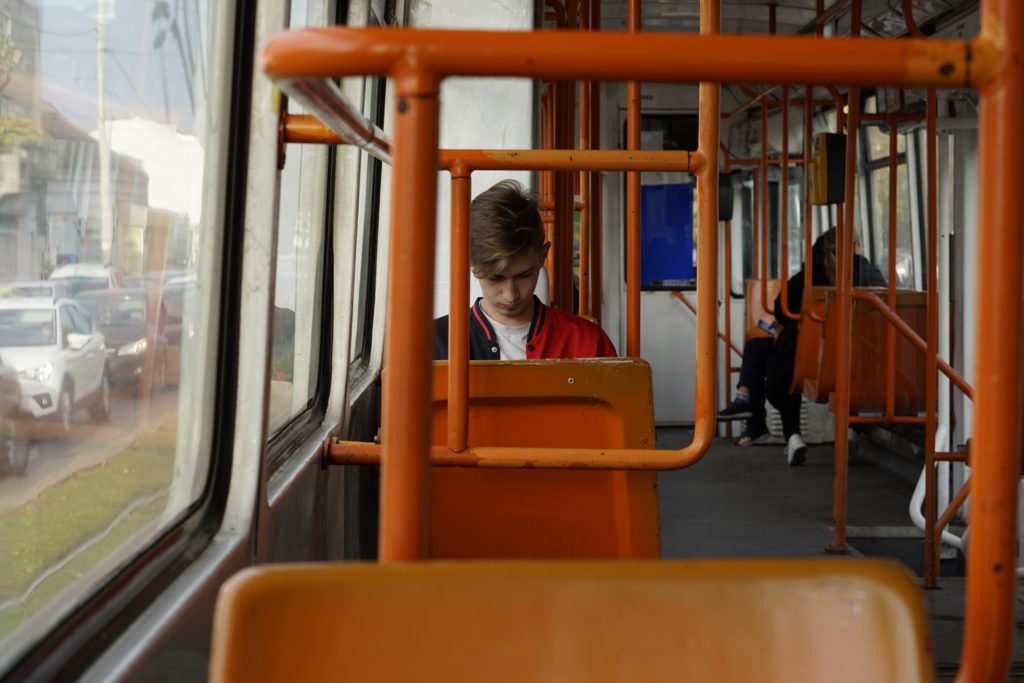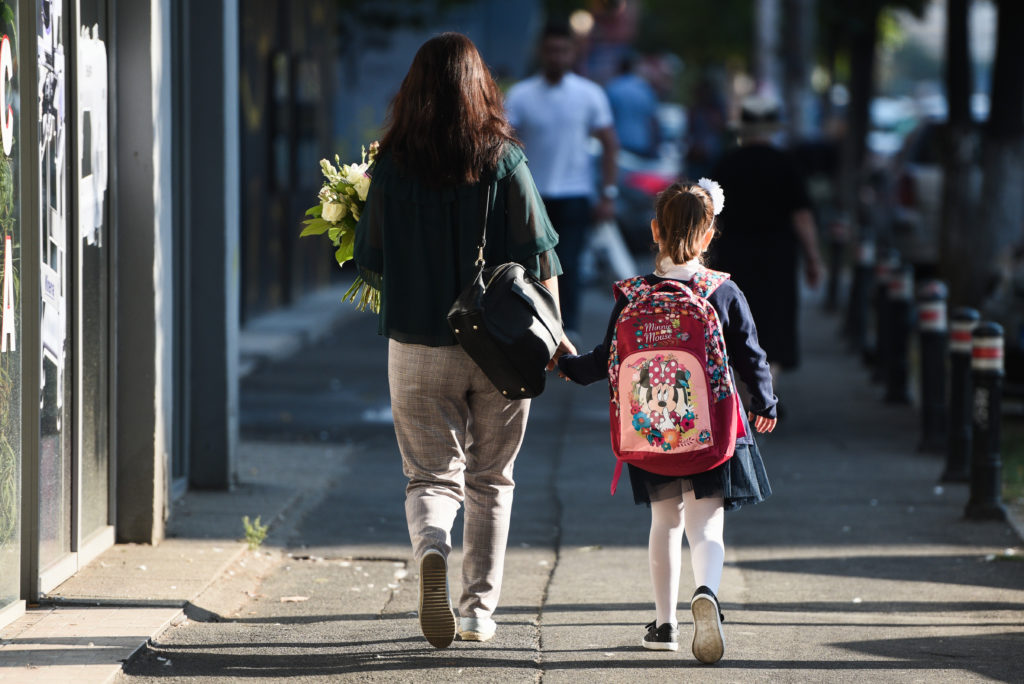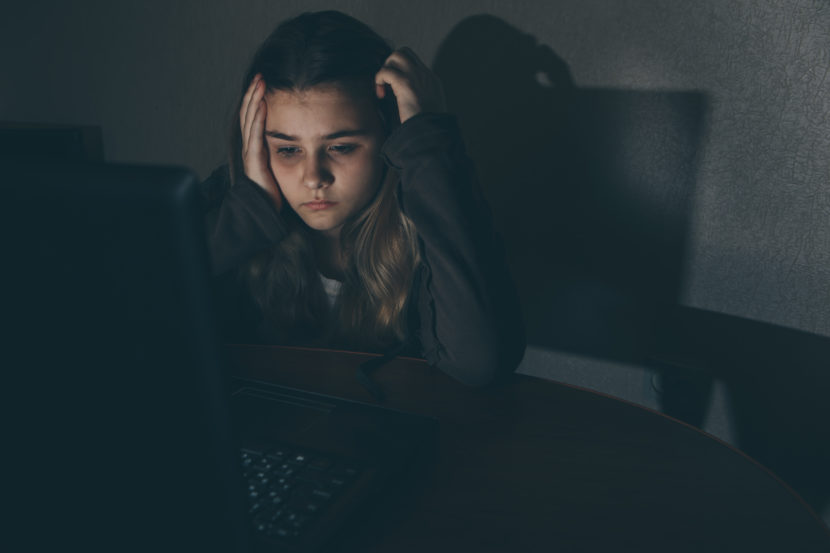Already in 2018, around four in ten Romanian adolescents said they had been cyberbullied. At that time, Romania recorded the highest victimization rate among seven European countries, well above Greece and Spain. More recent national surveys confirm that online harassment remains widespread, with victims reporting anxiety, withdrawal from school, and difficulties in maintaining friendships. Despite new legal proposals, Romania still addresses cyberbullying only indirectly, leaving protection dependent on local initiatives rather than a sustained national strategy.
Extent of cyberbullying among Romanian children compared to Europe
Back in 2018, Romania recorded the highest rate of cyberbullying among teenagers in a comparison of seven European countries. More than 37% of adolescents reported being bullied online within the previous year, compared with 27% in Greece and only 13% in Spain (Athanasiou et al., 2018).
These forms of abuse take different shapes in children’s daily lives. They include being sent repeated hurtful messages, excluded from online groups, mocked through rumors, or targeted with degrading hate speech. In some cases, children’s personal data was shared without their consent (Universitatea de Medicina si Farmacie “Grigore T. Popa”, n.d.).
Younger teenagers were more likely to be cyberbullied than older ones. Romanian adolescents over 16 had nearly 50% lower odds of victimization compared with their younger peers, suggesting that early- to mid-adolescence may be the most vulnerable period when children are both highly active online and less prepared to manage hostile digital exchanges. Patterns of daily internet use also mattered: those spending more than two hours a day on social networking sites faced an 83% greater chance of being bullied online (Athanasiou et al., 2018).
Everyday realities of cyberbullying for Romanian children
Bullying remains an everyday reality for many children in Romania. In 2021, nearly half of students said they had been bullied, and more than eight out of ten had seen classmates go through the same. By 2022, research from a university in Iași, Romania, showed that these experiences were not only common but also taking a clear toll on children’s mental health (Rus et al., 2024).
In 2023, a national sociological report on the impact of cyberbullying on children and adolescents was released, accompanied by a countrywide awareness campaign. That same year, the national child helpline registered 1,167 calls, with cyberbullying listed among the most common reasons for seeking assistance (Save the Children Romania, 2023).
These findings confirm that, despite prevention programs, online aggression is still widespread in 2023, and many Romanian children face a daily struggle to feel safe in the digital spaces that are central to their social lives (Save the Children Romania, 2023).
Digital spaces where bullying happens
Bullying among Romanian adolescents is closely tied to the digital spaces where children spend their time. Three in four victims were bullied on Facebook, two in five on Instagram, and nearly one in five through video games. Girls were more often targeted on Facebook and Instagram, while boys were more often bullied in gaming environments and on YouTube (Balas et al., 2023).
More than half of the victims were insulted in private messages, while 39% were drawn into online fights, and 35% had false rumors spread about them. Nearly one quarter received threatening messages, and smaller groups suffered profile hacking or identity theft. Others had confidential images shared without permission or were repeatedly contacted by strangers (Balas et al., 2023).
The risks of such online environments are made clear in a case that drew national attention when a popular vlogger Colo with nearly a million followers uploaded a video encouraging harassment and violence against teenage girls. He claimed that girls who wore revealing clothes deserved to be mistreated, even going so far as to describe acts of sexual violence (Universitatea de Medicina si Farmacie “Grigore T. Popa”, n.d.).
For children and adolescents watching, such statements blurred the line between entertainment and permission to harm others. At least one 16-year-old girl came forward to the police after being directly affected, admitting that she no longer felt safe leaving her house or attending school (Universitatea de Medicina si Farmacie “Grigore T. Popa”, n.d.).
Although Colo later released a video claiming his comments were only a “joke”, the impact on young people had already taken hold, with some even copying his example. This case shows how quickly online hate can escalate into cyberbullying, where harmful words spread widely and deeply affect children (Universitatea de Medicina si Farmacie “Grigore T. Popa”, n.d.).
Factors increasing Romanian children’s vulnerability
In 2010, only 2% of Romanian children accessed the internet from their mobile phones, compared with 31% in Norway. By 2018, the figure in Romania had risen to 86%, among the highest rates in Europe. This rapid expansion in less than a decade illustrates how quickly Romanian children moved online, often faster than parents or schools could adapt to guide them, creating a foundation for the vulnerabilities they face today (Smahel et al., 2020).

Unlike Western Europe, where digital growth was steadier and supported by school programs, Romania’s late but fast adoption has left children more exposed. Weak legal protections and limited digital literacy education have made children even more vulnerable to online abuse (Athanasiou et al., 2018).
At the same time, Romanian children often find their parents to be part of the problem rather than a source of support. More than one in four reported that their parents had shared personal details or images of them online without asking permission, and nearly a third had requested such material be removed (Smahel et al., 2020).
A 2023 national survey found that most Romanian parents saw screen use and online exposure as the main dangers facing children, yet fewer than four in ten reported actively supervising internet use or applying content filters. For many children, this means long hours online without consistent protection at home (Romania Journal, 2023).
In contrast, the Netherlands has long combined early digital literacy programs with active parental monitoring. Dutch children also grow up in a culture where online bullies are openly condemned by peers, which helps explain why cybervictimization rates there remain among the lowest in Europe (Athanasiou et al., 2018).
Consequences for children experiencing cyberbullying
The impact of cyberbullying on children can be severe. In fact, there is a strong link between cyberbullying and depression among Romanian adolescents. Being involved in online aggression at one point in time has been shown to predict higher levels of depressive symptoms months later.
In addition, factors such as loneliness, low self-esteem, and aggressive parenting are closely tied to cyberbullying, both as victimization and as perpetration. For children, this means that little warmth at home can make them easier targets, while harsh parenting can increase the risk of them bullying others (Iorga et al., 2022).As child psychologist Dr. Monica Barreto explains:
“Overall, cyberbullying occurs on a broader, omnipresent scale compared to traditional bullying, without physical violence, admittedly, but with the capacity to do significant harm to the reputation, emotional well-being, and social relationships of a child or adolescent.”
– Dr. Monica Barreto, Child Psychologist at the Orlando Health Arnold Palmer Hospital for Children (Suciu, 2021)
Cyberbullying laws in Romania compared with other EU Member States
Romania remains one of the few EU countries where cyberbullying is not defined as a general criminal offence. Instead, it is addressed indirectly through other areas of law. Law No. 106/2020 amended existing domestic violence legislation to include the category of “cyber violence” (Murphy, 2024).
Cyberbullying in schools is covered under the National Education Law No. 1/2011, which prohibits actions that endanger children’s physical or psychological health and provides for teacher training. A 2020 regulation further defined cyberbullying in the school context, including actions such as exclusion from online groups, hacking accounts, or spreading offensive content (Murphy, 2024).
In contrast, several EU states have adopted more direct and detailed frameworks:
- Ireland introduced “Coco’s Law” in 2020, which criminalises harmful online communications and non-consensual sharing of intimate images.
- France recognises cyberbullying in the Penal Code as a specific offence punishable by fines and imprisonment, with aggravated penalties when victims are minors.
- Italy passed Law No. 71/2017, which provides a comprehensive definition of cyberbullying and allows minors or parents to demand the immediate removal of harmful online content.
- Austria criminalised online harassment in 2016 and, in 2021 introduced new civil procedures that enable victims to quickly request removal of illegal content, with fines of up to €10 million for non-compliant platforms.
- Slovakia amended its Criminal Code in 2021 to define “dangerous electronic harassment,” explicitly criminalising repeated intimidation, humiliation, or dissemination of personal material through digital means (Murphy, 2024).
Legal and policy measures for protecting children in Romania
Romania, as a State Party to the UN Convention on the Rights of the Child, is legally bound to protect children from all forms of violence, including those occurring in digital spaces. The Committee on the Rights of the Child has repeatedly reminded Romania of this duty in its concluding observations, urging stronger national measures to ensure that schools and families provide safer environments for children (Refworld, 2003).
Reforms in 2025 suggest that Romania is slowly updating its legal framework to reflect the risks children face online, but protection against bullying and cyberbullying remains fragmented.
At the policy level, Romania’s implementation of the EU Better Internet for Kids (BIK+) strategy has been only partial. The 2025 Policy Monitor report noted that children’s digital rights are implied but not explicitly guaranteed in national law. Data on online risks is gathered only sporadically, and responsibility is scattered across different authorities. In practice, this means that responses to cyberbullying often rely on temporary projects or NGO initiatives rather than a coordinated national system (European Union, 2025).
At the legislative level, new proposals seek to give parents more formal tools to protect minors online. In June 2025, members of the National Liberal Party introduced a bill to set the digital age of consent at 16 years old. If adopted, the law would require children under 16 to obtain parental approval before opening accounts on social media, gaming, or entertainment platforms (Central Europe Report, 2025).
In July 2025, the National Cyber Security Directorate (DNSC) adopted a Regulation on social media platforms aimed at curbing abuses while balancing freedom of expression. The Regulation identifies major online risks and gives authorities the power to demand the removal of manipulative content under Law No. 50/2024 (OneTrust DataGuidance, 2025).
For children, this is an important step: it acknowledges that harmful digital environments, where bullying, exploitation, and disinformation often overlap, require stronger oversight of platforms. Yet, the Regulation’s focus is still largely on cybersecurity rather than the online harassment faced by Romanian teens. Cyberbullying is mentioned only indirectly, leaving unclear how children themselves can report abuse and receive timely support
Beyond regulating platforms, Romania must introduce a comprehensive strategy that puts children’s online well-being first.
- Clear procedures for reporting and responding to cyberbullying at the platform and school level.
- Integration of media literacy and digital citizenship into curricula, so children learn to navigate online spaces safely.
- Dedicated funding for mental health and counselling services for victims of online abuse.
- Mechanisms that empower children’s voices in shaping online safety policies, ensuring their rights are explicitly recognised rather than implied.

Humanium stands with every child affected by online harassment and works toward a future where their rights to safety, dignity, and participation are fully respected. You can support our work by sponsoring a child, donating, or volunteering. Together, we can strengthen children’s protection and create safer spaces for them to grow, both online and offline.
Written by Lidija Misic
Bibliography:
Athanasiou, K. et al. (2018), Cross-national aspects of cyberbullying victimization among 14–17-year-old adolescents across seven European countries. Retrieved from BMC Public Health at https://bmcpublichealth.biomedcentral.com/articles/10.1186/s12889-018-5682-4, accessed on August 30, 2025.
Balas B. et al. (2023), Cyberbullying in teenagers – a true burden in the era of online socialization. Retrieved from Lippincott Medicine at https://journals.lww.com/md-journal/Fulltext/2023/06230/Cyberbullying_in_teenagers___a_true_burden_in_the.27.aspx#JCL-P-32, accessed on August 30, 2025.
Central Europe Report (2025), Romania Proposes Online Safety Law for Kids. Retrieved from CE Report at https://www.cereport.eu/news/romania/85217, accessed on August 31, 2025.
European Union (2025), Romania – Policy monitor country profile. Retrieved from European Union at https://better-internet-for-kids.europa.eu/en/knowledge-hub/romania-policy-monitor-country-profile, accessed on August 31, 2025.
Iorga, M. et al. (2022), Exploring the Importance of Gender, Family Affluence, Parenting Style and Loneliness in Cyberbullying Victimization and Aggression among Romanian Adolescents. Retrieved from MDPI at https://www.mdpi.com/2076-328X/12/11/457, accessed on August 30, 2025.
Refworld (2023), UN Committee on the Rights of the Child: Concluding Observations: Romania. Retrieved from Refworld at https://www.refworld.org/policy/polrec/crc/2003/en/31009, accessed on August 31, 2025.
Romania Journal (2023), Which are the Romanian parents’ main challenges? Retrieved from Romania Journal at https://www.romaniajournal.ro/society-people/which-are-the-romanian-parents-main-challenges/, accessed on August 30, 2025.
Murphy, Colin (2024), Cyberbullying among young people: Laws and policies in selected Member States. Retrieved from the European Parliament at https://www.europarl.europa.eu/RegData/etudes/BRIE/2024/762331/EPRS_BRI%282024%29762331_EN.pdf, accessed on August 30, 2025.
OneTrust DataGuidance (2025), Romania: DNSC publishes Regulation of social media platforms. Retrieved from OneTrust DataGuidance at https://www.dataguidance.com/news/romania-dnsc-publishes-regulation-social-media, accessed on August 31, 2025.
Rus M. et al. (2024), Predictive factors regarding bullying behavior in Romanian schools. Retrieved from Frontiers at https://www.frontiersin.org/journals/psychology/articles/10.3389/fpsyg.2024.1463981/full, accessed on August 31, 2025.
Save the Children (2023), 2023 Annual Report. Retrieved from Save the Children at https://www.salvaticopiii.ro/sites/ro/files/2024-07/scr_2023_annual_report.pdf, accessed on August 31, 2025.
Smahel D. et al. (2020), EU Kids Online 2020 Survey results from 19 countries. Retrieved from EU Kids Online network at https://www.eukidsonline.ch/files/Eu-kids-online-2020-international-report.pdf, accessed on August 30, 2025.
Suciu, Peter (2021), Cyberbullying Remains Rampant On Social Media. Retrieved from Forbes at https://www.forbes.com/sites/petersuciu/2021/09/29/cyberbullying-remains-rampant-on-social-media/, accessed on August 31, 2025.
Universitatea de Medicina si Farmacie “Grigore T. Popa” (n.d.), Study on the national situation of cyberbullying in Romania. Retrieved from TECPC at https://tecpc.grant.umfiasi.ro/wp-content/uploads/2022/11/IO1_Country-Report_RO_final.pdf, accessed on August 30, 2025.


